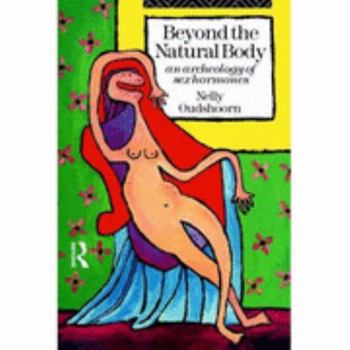Beyond the Natural Body: An Archaeology of Sex Hormones
Select Format
Select Condition 
Book Overview
First Published in 2004. Routledge is an imprint of Taylor & Francis, an informa company.
Format:Paperback
Language:English
ISBN:0415091918
ISBN13:9780415091916
Release Date:October 1994
Publisher:Routledge
Length:208 Pages
Weight:1.05 lbs.
Dimensions:0.4" x 6.1" x 9.2"
Customer Reviews
1 rating
Biology as cultural history
Published by Thriftbooks.com User , 27 years ago
This book is about the social construction of gender and body in biology. Oudshoorn shows how a Victorian idé fixe about finding the "natural" source of gender differences in order to maintain them led to the "discovery" of hormones such as estrogen and adrenaline and to their classification as "sex" hormones. She goes on to show how the availability of materials for hormone extraction and testing, the entrance of various professions and institutions into those activities, and the availability of (mostly female) bodies for clinical experimentation steered the development of those hormones into clinical products such as The Pill. Since Oudshoorn's analysis is about every body, I as a reader can experience it as being about my own body. For instance: I suffer from an autoimmune disease which affects many parts of the body -- intestines, skin, skeleton, eyes. Symptoms vary with stress levels and with the menstrual cycle. According to the hormonal concept of the body, this implies that the course of my disease is steered by "sex" hormones, the hormones that regulate fertility and secondary sex traits. But my experience also implies that these so-called "sex" hormones also are stress hormones, immune system hormones, digestive tract hormones, etc. Thus it is fascinating for me to read Oudshoorn's account of how the sexualized concept of these hormones and the hormonalized concept of the gendered body emerged and came to preclude other conceptualizations. Having read that account, I have a new understanding of why medicine is institutionalized such that my disease and therefore my body as a patient fall within the purview of gastro-enterology, while the hormones which seem to steer the disease fall within the purview of gynecology. I had wondered why neither my gastro-sugeon nor my gynecologist have been able to tell me what effects hormone therapies might have on the course of the disease, and although that is not a question Oudshoorn sets out to answer in Beyond the Natural Body, answer it she does. I have also read the book from the perspective of a fellow researcher and teacher in the social study of science and technology. Oudshoorn's book is fast becoming an important resource in this field. Here are four good reasons to buy it: 1) The gendered hormonal concept of the body is currently part of the hegemonic set of views in biology and medicine. This entails that many (all?) of us, like myself, are personally confronted by practices and institutions which derive from and serve to maintain the concept. The knowledge, practices, and institutions of the hormonal body are full of frustrating gaps and perplexing inconsistencies. As a material, historical, socio-political map of the hormonal body concept, Oudshoorn's book can perhaps help us deal with these gaps and inconsistencies, perhaps help us steer the further development of the hormonal body concept according to our interests as lived bodies. 2) In extension of the book's empi





